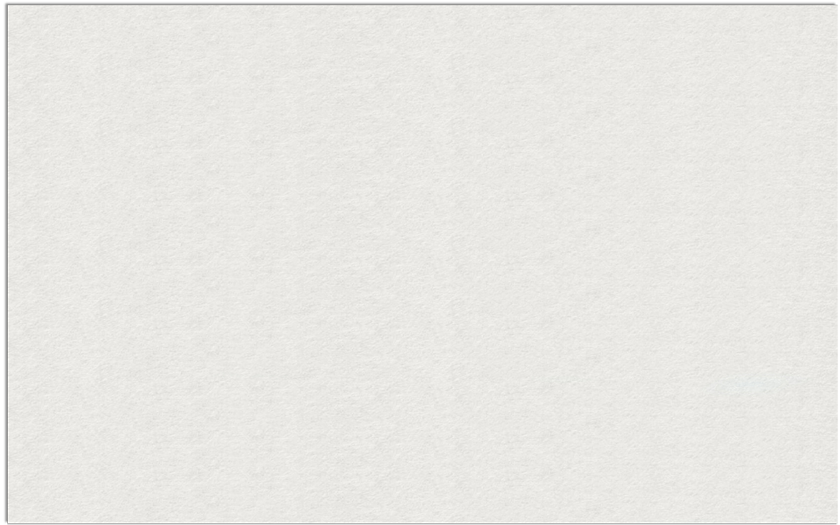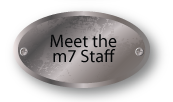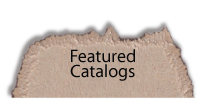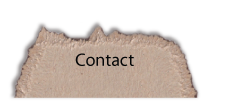--#--
1x1 Rib
This narrow rib has a soft, fine hand and retains its slim fit.
2x1 Rib Knit
Textured rib knit with a comfortable stretch—made to be worn alone or layered.
2-Way Zipper
A zipper with two zipper pulls so the garment can be unzipped from either direction.
4-Needle Stitching
A finish commonly used on a sleeve or bottom hem that uses four needles to create parallel rows of visible stitching, giving the garment a cleaner, more finished look, as well as adding durability.
--A--
Abrasion
The wearing away of a material by rubbing against another surface. Color abrasion of textiles is measured by Colorfastness to Crocking test.
Abrasion-Resistant
The ability of a surface to resist deterioration by friction. Commonly describes the durability of cured ink.
Absorbency/Absorption
The propensity of a material to take in and retain liquid.
Acceptable Quality Level (AQL)
In a series of lots, a quality level that sets the limit of defects allowable in a sampling for the lot to be acceptable. The smaller the AQL number, the fewer defectives allowed per sample size. The general apparel industry standard is AQL 4.0.
Acrylic
A manufactured fiber with a soft, wool-like hand, machine washable and dryable, excellent color retention.
Air Jet Yarn
A type of open-end spinning that uses a stationary tube in which jets of air are directed to cause fibers to twist thereby forming a yarn. This process definitely influences the soft hand feel of the fabric while maintaining excellent resistance to pilling.
Air-Jet Textured Nylon
A very high filament fabric in which yarns are propelled through a shed by means of a jet of air at high speeds giving it a very soft texture.
All-Weather Microfiber
Fabric that is tightly woven from an extremely fine poly thread with a sueded finish for a luxuriously supple feel. When combined with waterproof coating and full seam sealing, microfiber is 100% waterproof. 100% polyester.
ANSI
The American National Standards Institute (ANSI) is an organization that promotes standards for industry and government.
ANSI Class 2
An ANSI designation for garments that are intended for activities where greater visibility is necessary during inclement weather. It also covers workers who perform tasks that divert their attention from approaching traffic or puts them in close proximity to vehicles traveling 25 mph or higher.
ANSI Class 3
An ANSI designation for garments that provide the highest level of visibility and are intended for workers who face more serious hazards than Class 2.
Antimicrobial
A term used for a garment that is able to resist, either naturally or chemically, the effects of microbial secretions put off by the human body, resisting odor and increasing garment life.
Anti-Pill Finish
A treatment applied to garments primarily to resist the formation of little balls on the fabric's surface due to abrasion during wear. See Pilling.
Appliqué
Decoration or trimming cut from one fabric piece and stitched to another to add dimension or for design techniques.
--B--
Baby Pique Knit
A knitting method that creates a fine, small textured surface that appears similar to a very small waffle weave. See Pique Knit.
Back Yoke
A piece of fabric that connects the back of a garment to the shoulders. This allows the garment to lay flat and drape nicely.
Backing
Material used beneath the embroidered fabric to provide stability and support.
Barré
An unintentional, repetitive visual pattern of bars and/or stripes usually in the width direction of a fabric.
Bartack
To reinforce a seam with a bar of stitches, providing a more durable seam end. Commonly used at stress points.
Bamboo
A plant related to the grass species which is a naturally sustainable resource. Bamboo grows without the use of pesticides, is biodegradable, regenerative and generates more oxygen than trees. Bamboo fiber is spun into yarns and knit into fabric which is inherently antimicrobial and moisture absorbent.
Bean Stitch
Three stitches placed back and forth between two points. Often used for outlining because it eliminates the need for repeatedly digitizing a single-ply running stitch outline.
Bias Cut
A technique used by designers for cutting clothing to utilize the greater stretch in the "bias" or diagonal direction of the fabric, thereby causing it to accentuate body lines and curves and drape softly.
Birdseye Jacquard
A small geometric pattern with a center dot knit into the fabric.
Blanket Stitch
A decorative stitch often used to finish an unhemmed blanket. The stitch can be seen on both sides of the blanket.
Bleeding
In screen printing, the migration of ink, pigment or dye into unwanted areas. Typically occurs when one ink spreads or mixes with another ink, forming an unwanted third color. Also can occur during high-temperature curing where a low-opacity ink is placed on a dark poly/cotton garment - red or black, for example. Also known as color migration.
Blend
(1) A yarn or a fabric that is made up of more than one type of fiber. (2) In screen printing, A combination of two ink colors overlapping to create a third color. (ex: yellow & red will blend to make orange)
Bonded Fleece
Multiple layers of fleece are bonded together to form a higher functioning garment.
Bonding
The technique of permanently joining together two fabrics or layers of fabrics together by a bonding agent into one unit.
Bonding Agent
An additive in screen printing that gives ink better adhesion to such substrates as nylon.
Box Pleat
A single, uniform fold in the center back of a garment to allow for more room and comfort.
Breathability
The movement of water or water vapor from one side of the fabric to the other, caused by capillary action, wicking, chemical or electrostatic action.
Breathability Rating
The breathability rating is expressed in a gram measurement of how much vapor a square meter (G/M2) of fabric will allow to pass in a 24-hour period.
Broadcloth
A fine, closely woven, lustrous cotton or cotton/poly blend made in plain weave.
Brushed
A finishing process for knit or woven fabrics in which brushes or other abrading devices are used to raise a nap on fabrics or create a novelty surface texture.
Bungee Cord
An elasticized rubber cord used to fasten or cinch the garment around a body part.
Button-Down Collar
Found on many men's dress wovens, where the collar's wings can be buttoned to the front of the shirt, minimizing the spread between the wings.
Button-Through Sleeve Placket
A small placket located near the end of the sleeve, by the cuff, which contains a single button closure.
Byron Collar
Pointed collar with no band.
--C--
Canvas
A fabric usually made from cotton, flax, hemp, or jute in heavier weights, plain or double-end plain weaves, featuring strength and firmness.
Carded Yarn
A cotton yarn which has gone through an opening and cleaning process, containing a wide range of fiber lengths. Carded yarns are not as uniform or strong as combed yarn.
Care Instructions
A series of directions describing which care practices should refurbish a product without adverse effects and warning against practices expected to be harmful.
Casual Microfiber
Tightly woven fabric from a very fine polyester thread, usually with a sueded finish for a soft feel. Inherently water repellent and wind resistant due to its construction. 100% polyester microfiber.
Cationic Polyester
A type of polyester fiber that takes deep and brilliant colors without bleeding or fading. Cationic polyester optimizes printability.
Chambray
A plain woven fabric that can be made from silk or manufactured fibers, but is most commonly cotton. It incorporates a colored warp and white filling yarns.
Chin guard
A fold of soft fabric around the end of the zipper that helps prevent a scratched or irritated chin. Also known as a zipper garage.
CircularR Knit (Tubular)
Fabric knit on circular needle-bed knitting machine which produces fabric in tubular form.
Clear Soft-Hand Ink
Clear ink in screen printing that has no pigment but creates a darker, tonal look when applied to a garment. It also features a uniquely soft hand. Best results occur on color-wash and medium color garments. Not recommended for White, Navy, Dark Brown, or Black garments.
Coil (OGIO)
A metallic colored coil zipper.
Collar
The upright or turned-over neckband of a coat, jacket or shirt.
Collar Stand
On a woven shirt, the collar stand is around the neck and placed between the actual collar and the shirt. This stand raises the collar so its finished edge will fall smoothly back over the neck edge.
Color Bleeding
The loss of color due to improper dyeing or the use of poor quality dyes; causes staining of white or light shade fabrics in contact when exposed to water, solvents, chemicals or other liquids.
Color Fading
The lessening of color intensity due to inferior colorfastness properties, dye weakness, exposure to chemicals, natural or artificial light, water, chemicals or other agents.
Colorfast
A dyed fabric's ability to resist fading due to washing, exposure to sunlight and other environmental conditions.
Combed
A process by which the short fibers of a yarn are removed and the remaining longer fibers are arranged in parallel order for a high quality yarn with excellent strength, fineness and uniformity.
Comed Yarn
A cotton yarn which contains straighter and longer fibers (over 1 1/8") for better uniformity and strength An additional "combing" step is conducted on carded yarn to produce combed yarn.
ComfortBlend® EcoSmart® (Hanes®)
50/50 cotton/poly blend tees and sweatshirts made with up to 5% recycled polyester from plastic bottles.
Commercial Laundering
Process where textile products are refurbished in commercial laundering equipment, typically at higher temperatures, higher pHs and longer cycle times than used for home laundering.
Connecting Stitches
Threads that connect short distanced objects in embroidery. Distance of 1/16" is the industry standard for using a connecting
stitch.
Conveyor Dryer
A dryer that incorporates a conveyor belt that moves garments through a heating chamber to cure screen printed inks. Sometimes called tunnel dryers.
Cool Mesh™ Technology
Similar to a pique knit but with a more open texture for increased breathability. Features a soft hand for better comfort.
Cord Locks
A stopper or toggle on a drawcord that keeps the cord from retracting into the garment.
Corduroy
A cut filling pile cloth with narrow to wide ribs. Usually made of cotton, but can be found in polyester and other synthetic blends.
Cotton
A natural fiber that grows in the seed pod of the cotton plant. Fibers are typically 1/2 inch to 2 inches long. The longest staple fibers produce the highest quality cotton fabrics.
Cotton Count
A measure of thread density. It is the amount of thread measured in "hanks" (840 yards) needed to create one pound. With this system, the higher the number, the finer the yarn. In the United States, a cotton count between one and 20 is referred to as course counts. A regular single knit t-shirt can be between 15-18 count and a fashion tee is usually in the 30-40 count range.
Coverseamed
A finish in which two needles are used to create parallel rows of visible stitching. It is used around the neck, armholes, waistband and wrists of garments to create a cleaner, more durable finish.
Crocking
The transfer of color from the surface of colored textile materials to other surfaces by rubbing.
Cross Stitch
Two stitches that cross to form an X.
Crystalina Ink
A clear glitter ink that is screen printed over a color to give a sparkle effect. Crystalina ink may change the look of base color.
Cuff
The part of the sleeve encircling the wrist. Also the turned-back hem of a trouser leg.
Curing
An essential process in screen printing typically associated with plastisol inks whereby temperatures between 280-320 degrees F (137-165 C) are necessary to fuse, or cure, the inks.
--D--
Deboss
To depress below the surrounding fabric surface for decoration or lettering. Often confused with embossing which is to raise in relief from a surface.
Denier
A system of measuring the weight of a continuous filament fiber. The lower the number, the finer the fiber; the higher the number, the heavier the fiber.
Denim
A twill weave fabric made with different colored yarns in the warp and the weft. Due to the twill construction, the warp color predominates on the fabric surface.
Density
Number of embroidery stitches per given area.
Digital Printing
A 4-color process of printing directly from a computer file onto a garment.
Digitizing
Conversion of artwork into a series of stitch commands read by an embroidery machine's computer via a card.
Dip Dye (District Made)
100% ring spun cotton tees that have gradations of color.
Discharge
The one-step process where special inks are applied to a substrate – most often a black T-shirt – chemically bleach out the substrates color to create a printed image. The process is accelerated and completed as the garment passes through a curing dryer.
Disk or Tape
Disk containing computerized embroidery designs read by the embroidery machine's computer.
Distress
To make something appear worn. A variety of distressing techniques can be applied to artwork resulting in different looks.
District Fit
District has a slim fit that is close to the body. The styles have shorter sleeves and tighter and higher armholes than District Made.
District Made Fit
District Made has a comfortable fit with a relaxed waist. The styles have longer sleeves and more relaxed and lower armholes than District.
Dobby
A decorative weave, usually geometric, that is woven into the fabric. Standard dobby fabrics are usually flat and relatively fine or sheer.
Dolman Sleeve
A sleeve tapered from a very large armhole to fit closely at the wrist. Usually cut in one piece with the body of the garment.
Double Knit
A circular knit fabric knitted via double stitch on a double needle frame to provide a double thickness.
Double-Needle Stitching
A finish commonly used on a sleeve or bottom hem that uses two needles to create parallel rows of visible stitching, giving the garment a cleaner, more finished look, as well as adding durability.
Double-Tuck Pique
A pique knit fabric with a tuck stitch, where two loops are formed in a single loop, creating a mesh pattern.
Down
The soft, fluffy under feathers of ducks and geese. Services as an excellent thermal insulator and padding for bedding, sleeping bags and outerwear.
Dri-FIT (NIKE GOLF)
Fabric that helps keep the wearer comfortable and dry by moving perspiration from the skin, through the layers of fabric, to the outside layer for rapid evaporation across the outer surface area.
Dri-Mesh® Polyester
The double layer mesh construction releases heat and sweat, while maintaining breathability. 100% polyester double mesh.
Drop Needle
A knit fabric characterized by vertical lines within the cloth. Manufactured by dropping a needle from the knitting cylinder.
Drop Tail
A longer back than front for the purpose of keeping the shirt tucked in. Also referred to as Extended Tail.
Dry Zone® Technology
A double-layer polyester fabrication that wicks moisture away from the body.
Drycleaning
The cleaning of textile products with organic solvents instead of water.
Duck Cloth
Tightly woven, plain-weave, bottom-weight fabric with a hard, durable finish that provides wind and snag resistance.
Durable Water Repellent (DWR)
Water repellent fabric which will maintain its repellency characteristics after multiple launderings. Many Vantage jackets and windshirts have DWR finish.
Durahyde
A durable synthetic polyurethane leather-like material.
DWR
Durable water repellent. A DWR treatment involves applying a coating to a jacket's outermost fibers to prevent precipitation from saturating the jacket's exterior.
Dyed-To-Match
A term which characterizes buttons or trims that are the same color as the garment onto which they are sewn.
--E--
Emble/Patch
Embroidered design with a finished edge, stitched independent of garment.
Embossing
A process in which heated rollers under pressure produce a raised design on the fabric surface.
Embroidery
Decoration consisting of needlework created using a special machine that is programmed to stitch a design combining texture, pattern and color.
End-on-end
A fabric in which white or contrast color threads are interwoven alternately with colored threads to produce a subtle textured effect.
Enzyme Washed
A laundering process in which a catalytic substance is added to create a chemical change in the fabric resulting in a very soft finish, smoother appearing surface and reduced shrinkage.
Epaulet
An ornamental fabric strip or loop sewn across the shoulder of a shirt, dress or coat.
Ergonomic
Design elements incorporated into a garment to improve the design by enhancing the wearer's comfort, performance or health.
Etched Tone Buttons
A more upscale horn tone button with an etched pattern.
Extended Tail
A longer back than front for the purpose of keeping the shirt tucked in. Also referred to as Drop Tail.
Extreme Heather (District)
A soft, durable fabric made of a poly/cotton blend. It has a nicely striated, heathered look.
Eyelets
Small holes or perforations made in a series to allow for breathability. Finished with either stitching or brass grommets.
EZCotton™ Pique
Made from the highest grade of long-staple cotton, this fabric has an innovative finish that provides a consistently softer hand, enhanced smoothness, color fastness, wrinkle resistance and shape retention. 100% cotton.
-F--
Fabric Strength
The maximum force applied to a fabric brought to rupture, known as breaking or tensile strength of woven fabrics, or burst strength of knit fabrics.
Faded (District)
100% ring spun combed cotton tees with color concentrated in the seams.
Faille
A soft, finely-ribbed woven fabric made using heavier yarns in the cross-grain to produce a horizontal, ribbed effect.
Felt
Non-woven fabric made by layering thin sheets of fibers, then applying heat, moisture and pressure to shrink and compress the fibers into a thick matted cloth that will not ravel or fray. Used for appliqué designs and letters.
Fill Power
The measure of the loft or "fluffiness" of a down garment that is loosely related to the insulating value of the down. The higher the fill power, the more trapped air an ounce of the down can trap, and thus the more insulating ability an ounce of the down will have.
Fill Stitch
A series of running embroidery stitches commonly used to cover large areas.
Finishing
Processes done after the embroidery is completed, including trimming loose threads, removing excess facing or backing, and pressing or steaming to remove puckers and hoop marks.
Fleece
A soft bulky fabric with deep pile; used chiefly for clothing.
Flannel
A plain or twill weave fabric that has a very soft hand, brushed on both sides to lift the fiber ends out of the base fabric and create a soft, fuzzy surface. End-uses include shirts, linings, and pajamas.
Flash Cure
When screen printing, a partial curing (fusing) process of plastisol inks most often used in multicolor printing between color applications, allowing other inks to be printed without bleeding.
Flat Collar/Cuffs
A single ply fabric with a finished edge that is used for collars and cuffs on sport shirts and short sleeve garments. Also known as welt.
Flatlock Stitching
Made by bringing two raw fabric edges together and covering them with machine stitching. Often used in activewear.
Flexfit®
Caps that feature a patented technology that weaves spandex into the sweatband and throughout the crown for a superbly comfortable fit.
Flock
Very short individual fibers that are applied via adhesive to a backing to form a velvety surface.
Flocked Transfer
Colored fibers are adhered to a transfer sheet to create intricate textured designs that are transferred by heat to a garment.
Frame
Holding device for inserting the hoop beneath the needle to maintain stability during the embroidery process.
French Cuff
A shirt cuff that is folded back before fastening, creating a double-layered cuff.
French Terry Cotton (District)
The knit jersey version of terry cloth. It features loops of pile on one side and a smooth, brushed finish on the other for softness and a lived-in, vintage look.
Full Cut
Refers to a garment's fit as being generous and roomy.
Fully Fashioned
A garment that's knitted to fit the shape of the body.
Fused Collar/ Placket/ Cuff
Made with an interfacing as a foundation fabric with adhesive making it easier to iron or wrinkle-free.
--G--
Garment Dyed
A dyeing process that occurs after the garment is assembled.
Garment Washed
A wash process where softeners are added to finished garments to help the cotton fibers relax. The result is a fabric with a thicker appearance, reduced shrinkage and a softer hand.
Gauge
A measurement commonly associated with knitting, meaning the number of needles per inch in a knitting machine
Glitter Ink
Colored ink with small flecks of glitter used for screenprinting.
Gravel 50/50 (District)
Tees made of 50/50 ring spun combed cotton/polyester that are exceptionally soft and colorful.
Grommet
A small ring or stud (metal or plastic) used to reinforce an eyelet or a stitch.
Grosgrain
A firm, closely woven fabric with narrow horizontal stripes. Commonly used for ribbons, neckties and trimmings.
Gusset
A fabric insert, as in the seam of a garment, for added strength or expansion; often triangular in shape.
--H--
Hand
The feel of ink on a substrate's surface. A "soft" hand has a light feel; a print with "no" hand feels like nothing has been placed on the fabric. "Heavy" hand examples are puff inks and the rubbery-feeling letters on football jerseys. Also, the weight, heft and fineness of fabric itself. For example, a pima lisle cotton knit has a finer hand than a 50/50 cotton/polyester fleece.
Heat Transfer
The process of transferring a design from a specially treated paper to a garment using temperatures around 375 F (190 C). See "Hot-peel transfer" and "Cold-peel transfer."
Heather
A yarn that is spun using pre-dyed fibers. These fibers are blended together to give a particular look. (For example, black and white may be blended together to create a grey heathered yarn.) The term, heather, may also be used to describe the fabric made from heathered yarns.
Herringbone
A variation on the twill weave construction in which the twill is reversed, or broken, at regular intervals, producing a zigzag effect.
Hidden-Button Collar
Shirt collar with pointed ends fastened to shirt by small buttons to a hidden loop on the underside of the collar points.
High-Density Ink
A specially formulated ink for screen printing that adds height to a design with a clear, sharp edge. Creates a 3-D appearance.
High Profile
A term used for a cap or hat silhouette that is less fitted to the head with a high slope. Usually structured with buckram or other stiff fabric lining.
Honeycomb Pique Knit
A pique fabric with a waffle or cellular appearance.
Hoop
Wood, plastic or steel device used to tightly grip the fabric and stabilizer between an inner and outer ring. Attaches to machine's frame. Designed to hold fabric taut against the machine bed for embroidery.
Horn Tone Buttons
Buttons that appear to be manufactured from horn.
Houndstooth
A medium-sized broken check effect that is knit into the fabric.
--I--
IL50 (Industrial Laundry)
Signifies that a garment has been certified to withstand at least 50 industrial laundry cycles, which are typically about ten times more strenuous than a home wash.
Interlock Knit
A two-ply fabric knit simultaneously to form one thicker and heavier ply. It has more natural stretch than a jersey knit, a soft hand, and the same appearance and feel on both sides. Commonly used in knit shirts and turtlenecks.
Iridescent Buttons
Buttons with a lustrous, rainbow-like hue.
ISO 9000 Standards
A set of international standards on quality management and quality assurance developed to effectively document the system elements to be implemented to maintain an efficient quality system.
--J--
Jacquard Knit
Often an intricate pattern knit directly into the fabric during the manufacturing process. Typically, two or more colors are used.
Jersey Knit
The consistent interloping of yarns in the jersey stitch to produce a fabric with a smooth, flat face and a more textured, but uniform back.
Johnny Collar
A small collar over a ribbed v-neck.
--K--
Knit
Fabric formed by interlooping one or more strands of yarn by the use of knitting needles. The vertical rows of loops are called "wales"; horizontal rows of loops are called "courses". Changing the loop arrangement will produce a variety of knit constructions or stitches, such as pique, interlock, jersey, rib, etc.
--L--
Lab Dip
Dyeswatch prepared in laboratory to establish dye formulation and standardization of a textile shade.
Laser Appliqué
A laser beam is used to cut single or multiple fabric layers revealing a fine, detailed design.
Laser Etching
A process that uses laser technology to etch or burn a mark on a fabric surface.
Lettering
Embroidery using letters or words. Lettering, commonly called "keyboard lettering," may be created using an embroidery lettering program on a PC or from circuit boards that allow variance of letter style, size, height, density and other characteristics.
Linen
A fabric made from linen fibers obtained from inside the woody stem of the flax plant. Linen fibers are much stronger and more lustrous than cotton. Linen fabrics are very cool and absorbent, but wrinkle easily, unless blended with manufactured fibers.
Lock Stitch
Formed by three or four consecutive short, tight threads stitched at end of embroidery to prevent raveling.
Locker Loop
A looped piece of fabric in the neck of a garment for the convenience of hanging the garment on a hook. Can also be located at the center of the back yoke on the inside or outside of a garment.
Locker Patch
A semi-oval panel sewn into the inside back portion of a garment, just under the collar seam to reinforce the garment and minimize stretching when hung on a hook. The patch also allows for the garment tag or label to be sewn below the neckline to help prevent irritation.
Looping
Loops on the embroidery surface generally caused by poor top tension or tension problems. Typically occurs when polyester top thread has been improperly tensioned.
Low Impact Technology™ (L.I.T.)
Enhances the softness and performance of 100% polyester fleece in that the yarns are able to accept dye more readily which uses less water and energy than standard dyeing procedures.
Low Profile
A term used for a cap or hat silhouette that is more closely fitted to the head. Can be either structured or unstructured.
--M--
Man Made Fiber (Synthetic)
The class name for fibers which are chemically produced (acrylic, nylon, polyester, acetate, etc.).
Marled Fleece (District)
A ring spun cotton/poly fleece. When cotton is marled, each colored ply of yarn is twisted together and then knitted to create one long, continuous piece of yarn. This gives marled fleece its two-toned, mottled appearance.
Matte Taslan
A durable and water repellent nylon fabric, used mainly in outerwear garments. Same properties and hand as traditional Taslan, but with a dull, matte finish.
Melamine
A highly resistant, exceptionally strong plastic laminate material sometimes used in buttons.
Melange
A mix of different colors of yarns knit together to create a heathered effect.
Mercerized
The result of a process in which cotton yarn or fabric is immersed in a caustic soda solution and later neutralized with an acid bath. This process increases luster, strength and affinity for dyes.
Mesh
A type of fabric characterized by its net-like open appearance and the spaces between the yarns. Mesh is available in a variety of constructions, including wovens, knits, laces or crocheted fabrics.
Mesh Count
The system used to designate the number of threads per inch in a woven fabric. A high mesh count means the fabric has smaller holes and is more tightly woven. A low mesh count means the fabric has larger holes and is more loosely woven. Mesh count affects design reproduction detail. High mesh counts are better for halftones and low mesh counts are better for solids.
Metallic Inks
Screen printing ink containing metallic particles such as aluminum and bronze processed with ink to give appearance of gold or silver. Has a smooth finish. The metallic appearance of liquid silver & liquid gold ink may fade with machine washing and drying. For best results, hand wash and line dry.
Metameric Color Match
A colored product which maintains its same color appearance under variable light conditions.
Microburn™ (District/District Made)
75/25 poly/ring spun cotton tees that have a rare blend of shades for an unusually lightweight feel and a one-of-a-kind look.
Microfiber
Tightly woven fabric from a very fine polyester thread, usually with a sueded finish for a soft feel. Inherently water repellent
and wind resistant due to its construction.
Microfleece
Crafted from ultra-fine yarn, this lightweight, high-density fleece is brushed less than a regular fleece garment for a tight look, excellent softness and warmth. 100% polyester microfleece.
Mid Profile
A term used for a cap or hat silhouette that is in between that of a High Profile and Low Profile. Most often structured with buckram.
Milano Knit
Identified by a fine rib effect on the face of the fabric.
Mini Rib (District Made)
Ultra soft 100% combed cotton tees and tanks that have an elevated, superfine rib for excellent shape retention and a flattering, trimmer fit.
Mock Turtle
Separate reduced height band collar, single ply, that fits close to the neck.
Modal Blend (District/District Made)
A super soft fabric made of a blend of ring spun cotton/modal. Modal is soft, smooth and breathable with a texture similar to cotton or silk. It washes well and resists pilling, so the garment looks better, longer.
Modern Stretch Cotton
A breathable fabric made from a blend of cotton and spandex to provide a flattering stretch. 96% cotton. 4% spandex.
Moisture Movement
Process of a fabric absorbing liquid moisture (by wicking) and moving it to the outer surface so it may rapidly evaporate.
Monogram
Embroidered design composed of one or more letters, usually one's initials or name.
--N--
Nailhead
A jacquard knitting pattern in which the jacquard forms a design similar to small nail heads.
Nap
A fuzzy, fur-like feel created when fiber ends extend from the basic fabric structure to the fabric surface. The fabric can be napped on one or both sides.
Natural Fiber
The class name for fibers of animal (silk, wool), vegetable (cotton, flax, linen, jute, and ramie) or mineral origin (asbestos).
Neckband
A strip of fabric sewn around the inside of the neck in a woven shirt.
Non-Iron
A term characterizing fabric that has been chemically treated to resist wrinkles, eliminating the need for ironing.
Notched Lapel
A tailored collar which has an indentation or "notch" cut out where the lapel joins the collar.
Nublend® Fleece (JERZEES®)
A combined knitting and spinning process developed by JERZEES® for the prevention of pilling.
Nylon
A synthetic fiber with high strength and abrasion resistance, low absorbency and good elasticity.
--O--
Opacity
The quality or ability of a screen printing ink to keep light from penetrating. To completely cover a substrate, thereby fully hiding the color of the garment underneath.
Open End Spun
A system of spinning yarns which introduces twist without rotating the yarn package. Yarn is spun at exceptionally high speeds for cost savings.
Organic Perfect Weight Cotton
With the same relaxed drape and comfortable stretch of Perfect Weight, this fabric is made from certified organic cotton for a hypoallergenic and biodegradable fabric. 100% certified organic ring spun combed cotton.
Ottoman
A tightly woven, horizontal raised rib textured knit.
Overall
Refers to a print whose image or images cover the entire substrate, front and back. Also referred to as "All over."
Overdyed
A process in which yarn-dyed fabrics or piece-dyed garments are put through an additional dye color to create unique colors.
Oxford
A fine, lightweight woven cotton or cotton blend fabric with a 2x1 basket weave variation. Typically used for dress shirts.
--P--
Pallet
A surface that supports a garment during the printing process. Also called a shirtboard or a platen.
Patch Pocket
A pocket attached to the outside of a garment.
Peached
A soft hand usually obtained by sanding the fabric lightly. Can be achieved with chemical or laundry abrasion.
Pearlized Buttons
Buttons that have a pearl-colored hue.
Perfect Blend™ (District Made)
A 50/50 blend of ring spun combed cotton and poly which makes Perfect Blend tees as good or better than the finest purebred.
Perfect Weight® Cotton (District/District Made)
This extra-fine gauge 30 singles 100% ring spun combed cotton yarn is known for its lightweight softness. It's then compacted to 4.3 ounces for long-term durability and shrink resistance. The result is garments that look and feel perfect wear after wear.
Pewter Buttons
Buttons that have a dull, metallic hue.
Picot
A series of small embroidered loops forming an ornamental edging on some ribbon and lace.
Pewter and Horn Tone Buttons
Buttons that incorporate pewter and horn tone. Usually one encompasses the other.
Piece Dyed
A dyeing process that occurs when the fabric is in yardage form after it has been knitted or woven, but before the garment is assembled.
Pigment Dyed
A type of dye process used to create a distressed or washed look that results in soft, muted tones and a soft hand.
Pilling
A tangled ball of fibers that appears on the surface of a fabric as a result of wear or continued friction or rubbing on the surface of the fabric. See Anti-Pill Finish.
PimaCool™ Technology
A blend of Pima cotton and polyester create a soft fabric that offers performance moisture wicking and breathability. 55% Pima cotton. 45% polyester.
Pima Cotton
A term applied to extra-long staple cotton grown in the U.S., Peru, Israel and Australia. It can only be grown in select areas where the cotton is fully irrigated and benefits from a longer growing season for a softer, stronger cotton than standard cotton.
Pique Knit
A knitting method that creates a fine textured surface that appears similar to a waffle weave. Commonly used for polo shirts.
Placket
The part of the shirt or jacket where the garment fastens or buttons together. Types of plackets include: reverse (generally a ladies styles in which the buttons are on the opposite side of a men's garment), open (in which there are no buttons or fasteners) and decorative (non-functioning).
Plastisol
A family of inks popularly used by screen printers. The inks contain a plasticizer, such as polyvinyl chloride, or PVC.
Pleat
A flat usually narrow fold made in a piece of cloth by pressing or sewing two parts of the cloth together.
Ply
Two or more yarns that have been twisted together.
Poly-Bamboo Charcoal
Polyester fabric blended with polyester from bamboo charcoal which resists UV rays and wicks moisture.
Polyester
A strong, durable synthetic fabric with high strength and excellent resiliency. Low moisture absorbency allows the fabric to dry quickly.
Poly-Filled
A warm polyester lining found in the body or sleeves of outerwear garments. It has more loft than a regular nylon lining.
Polynosic Rayon
Rayon staple fibers which are high-wet modulus (improved resistance to deformation, wrinkling). Fiber length is twice as long as conventional rayon.
Polypropylene
A very light, highly resistant, thermoplastic resin used to make coatings, packaging and fabrics.
Polyurethane Coating (PU Coating)
A finish commonly used in winter jackets, rainwear and windwear to offer high performance water resistance, while maintaining the garment's breathability.
Popcorn Pique
Alternating rows of baby pique knit and a larger pique knit that resembles small circles knit closely together.
Poplin
A tightly woven, durable, medium-weight cotton or cotton blend made by using a rib variation of the plain weave which creates a slight ridge effect.
Port Pocket™ Access
A zipper entry pocket that allows the garment to be hooped and embroidered with no exposure on the inside lining of the garment.
PosiCharge Mesh™
Water-soluble dye process that breaks apart, or ionizes, in the dyeing solution to give off a positively charged colored ion. The cationic ions dye the polyester fibers by linking with the acid groups on the fibers - locking in the color. This results in a better, bleed-resistant, colorfastness.
Pre-Shrunk
Fabrics or garments that have received a pre-shrinking treatment.
Princess Seams
Short, stitched folds that taper to a point, typically used to shape women's garments.
Print Pro® XP Process (Hanes®)
A fleece knitting process developed by Hanes that creates a tighter knit for a better printing surface.
Printed Transfer
Printed transfers use many of the same inks and techniques of printing to create a design that is transferred from a sheet to a garment using heat.
Puckering
Result of fabric being gathered by the stitches. Possible causes include loose hooping, lack of or improper backing, incorrect tension or a dull needle.
Puff Embroidery
Stitching a dense motif over embroidery/craft foam to create a three-dimensional effect.
Puff Ink
A screen printing ink that expands when heated, giving a three-dimensional look.
PVC
A polyurethane coating that is added to make garments water resistant.
--Q--
Quilting
A fabric construction in which a layer of down or fiberfill is placed between two layers of fabric, and then held in place by stitching or sealing in a consistent, all-over pattern.
--R--
Raglan Sleeves
An athletic cut sleeve set with a diagonal seam from the neck to the underarm. Offers more freedom of movement in comparison with set-in sleeves.
Rapid Dry™ Technology
Designed with a unique weave to wick away moisture from the body.
Rayon
A manufactured fiber composed of regenerated cellulose, derived from wood pulp, cotton linters or other vegetable matter, with a soft hand. Frequently used for shirts and pants.
Recycled Pet
PET is the abbreviated name for polyethylene terephthalate, the polymer used to create plastic soda bottles. Recycled soda bottles are processed and converted into polyester fibers that are knit into the fabric of our recycled fleece.
Resizing
The ability to scale an embroidery design to different sizes. May cause density problems unless stitch count can be altered.
Reverse Coil Zipper
Unlike the basic coil zipper, a reverse coil zipper doesn't show its teeth from the front.
Reverse Placket
When the buttons on a placket are on the opposite side from a men's garment. Commonly done on women's styles.
Rib Knit
A textured knit that has the appearance of vertical lines. It is highly elastic and retains its shape. Commonly used for sleeve and neck bands.
Ring Spun
Yarn made by continuously twisting and thinning a rope of cotton fibers. The twisting makes the short hairs of cotton stand out, resulting in a stronger yarn with a significantly softer hand.
Rip-Stop Nylon
A lightweight, wind and water resistant plain weave fabric with large rib yarns that stop tears without adding excess weight. Often used in activewear.
Ruching
A French term which means to gather, ruffle or pleat the fabric.
Running Stitch
A stitch that is spaced equally, with the underside stitching being half the length of the external side.
R-Tek™ Fleece
An exclusive lightweight microfleece with a soft, plush hand and an anti-pill finish to resist pilling. 100% polyester.
--S--
Sandwashed
A process in which the fabric is washed with very fine lava rocks or rubber/silicon balls, resulting in a softer fabric with a relaxed look and reduced shrinkage.
Satin Stitch
Formed by closely arranged zigzag stitches. Can be stitched at any angle and with varying lengths.
Scoop Neck
Characterized by a deep, rounded neckline that is significantly deeper than normal necklines. Typically found on women's shirts.
Screen Printing
The process of printing by pressing ink through open areas of a stencil-coated mesh screen to create a design. Multi-colored designs are achieved by using a separate screen for each color in the design.
Sculpted Hem
A hem that is softly rounded for fashion detail and un-tucked wear.
Seam Sealing
The process of treating the stitch holes and seams of a garment to prevent leaking and to ensure full waterproof integrity.
Self-Fabric Collar
A collar that is constructed from the same material as the body of the garment.
Self-Fabric Sweatband
Refers to a panel of fabric at the front of a cap that is constructed from the same fabric as the crown of the cap.
Serge
An overcasting technique done on the cut edge of the fabric to prevent unraveling.
Set-In Sleeves
Most common style of sleeve, which is sewn into the shoulder seam.
Sequin Embroidery
A technique in which sequins are embroidered directly onto a garment or cap.
Sherpa Fleece
A knit terry fabric that has been brushed and washed to raise the fibers for a fluffy, plush feel. The thick terry loops stay soft and absorbent over time.
Shimmer Ink
A very fine glitter ink for screen printing with a powdered shimmering appearance.
Shrinkage (Dimensional Change)
The change in length and/or width dimensions of a garment when subjected to specified conditions.
Side Vents
Slits found at the bottom of side seams, used for fashion detailing, as well as comfort and ease of movement.
Silk
A natural filament fiber produced by the silkworm in the construction of its cocoon. The shimmering appearance for which silk is prized comes from the fiber's triangular, prism-like structure, which allows silk fabric to refract incoming light at different angles. Silk is recognized for its fine hand and fluid drape.
Silk Touch™
Our silky soft 65/35 poly/cotton pique blend polo that is durable, wrinkle resistant and shrink resistant. (Not to be confused with silk wash which is a finish on 100% ring spun combed cotton tees for exceptional softness.)
Singles
A term used to indicate the diameter of a yarn. The smaller the number, the thicker the yarn.
Skew, Spirality or Torque
A rotation or twisting of fabric or garment panels from the release of latent stresses in knitting or weaving.
Slash Pockets
A pocket in a garment to which access is provided by a vertical or diagonal slit in the outside of the garment.
Slub Cotton (District/District Made)
A soft cotton that is lightweight without being overly sheer. It has a distinctive thick-and-thin look and adds subtle texture. Made of 100% ring spun cotton.
Soft Shell
A fabrication that combines the benefits of hard shell fabrics with a breathable, flexible and comfortable fabric
Soil-Release Finish
A fabric treatment that helps a garment release stains in the wash.
Spandex
A manufactured elastometric fiber that can be repeatedly stretched over 500% without breaking and will still recover to its original length.
Spread Collar
Shirt collar with a wide division between points in front.
Sphere Dry (NIKE GOLF)
A patented fabric with a raised bumpy surface that lines the inside of the shirt, which not only creates an appealing athletic-inspired texture, but also works like a funnel to draw perspiration from the inside out. The fabric's three-dimensional construction also creates air space around the body to reduce cling.
Specialty Fill
Fill stitch capability that produces an embroidery design in relief.
Specialty Threads
Threads designed for effects such as shine, glitter, iridescence or thickness. The thread soften are made from synthetic materials including rayon, mercerized cotton, metallics and textured nylon.
SPI - Stitches per Inch
System for measuring density or the amount of satin stitches in an inch of embroidery.
Sport-Wick® Fleece
An anti-static fleece that provides moisture wicking by releasing moisture from the inner layers.
Stain Resistance
A fiber or fabric property of resisting spots and stains. Commonly used for industrial or restaurant uniforms.
Stand-Up Collar (Banded)
Collar extending higher on the neck. May also b eturned down in either front or back, to form two distinct types of collars.
Stonewashed
A process in which the fabric or garment is heavily washed with lava rocks or rubber/silicon balls, resulting in a softer fabric with a distressed, weathered look and reduced shrinkage.
Storm Flap
A piece of fabric that covers and protects an opening, usually a zipper, on an item of clothing. It is designed to add another barrier on more vulnerable parts of the clothing to protect against wind and moisture.
Studded Transfer
Colored metallic and rhinestone studs are arranged on a sheet that is used to transfer the studs to a garment using heat.
Structured
A headwear term referring to a buckram lining used to control the slope of the cap.
Sublimation
A type of transfer in which dyes, rather than inks, are used to transfer a design onto a substrate with a combination of heat and pressure. The dyes vaporize and are absorbed by polyester fibers. The process can be used to print textiles, as well as mugs, plates or other specialty items.
Suede Ink
Screen printing nks with a soft textured suede-like hand.
Sueded
A process in which fabric goes through a brushing process to raise the nap and give the garment a soft hand.
Super Heavyweight Fleece
A 12-ounce cross-grain heavyweight fleece. 80% ring spun combed cotton. 20% polyester.
Sustainable Fibers
Fibers made from resources that contribute to the productivity of natural ecological systems and help to reduce long-term/harmful effects on the environment.
--T--
Tackle Twill
Letters or numbers, cut from twill fabric that are commonly used for athletic teams and organizations. Tackle twill appliqués attached to a garment have an adhesive backing that tacks them in place; the edges of the appliqués are then zigzag stitched.
Taffeta
A lustrous plain weave fabric commonly used for linings and windbreakers.
Taped Seams
A strip of fabric sewn to the seam of a garment to prevent distortion. In outerwear, taped seams aid in waterproofing.
Taslan
A durable and water repellent nylon fabric with a slightly shiny surface, used mainly in outerwear garments.
Tattersall
A pattern of dark lines forming squares on a light background.
Tech Patch
A synthetic foam material that has a smooth hand, flexes with the garment, and can be designed in a variety of shapes.
Teklon
A rugged, stronger Taslan nylon that is water repellent.
Tension
Thread tautness.
Terra-Tek™ Nylon
Durable and water repellent with a matte finish.
Terry Cloth
A pile weave fabric with uncut loops on the surface. Typical uses include towels, robes, and apparel.
Terry Velour
A pile weave cotton fabric with an uncut pile on one side and a cut pile on the reverse side. It has a soft, plush feel and is water absorbent. Commonly used for towels, robes and apparel.
Textured Fabric (District/District Made)
A blend of polyester, ring spun cotton and rayon that has a vintage look, but the distinctive texture makes it stand out.
Thread
Fine cord of natural or synthetic twisted fiber used for stitching. Machine embroidery threads come in rayon (high sheen), cotton (duller finish), polyester (strong and colorfast), metallics (synthetic core wrapped with metal foil or thin slivers of metal foil) and acrylic (sheen similar to rayon).
Topping
Material hooped or placed on top of fabric to hold the embroidery stitches above it.
Tri-Blend (District)
A unique, soft blend of poly, cotton and rayon that has heathered look.
Tricot
A knit fabric of various natural or synthetic fibers like wool, silk, nylon or polyester having fine vertical ribs on the face and horizontal ribs on the back.
Tricot Lining
A very lightweight nylon lining often used in shorts.
Trimming
Operation in the finishing process that involves trimming the reverse and top sides of the embroidery, including jump stitches and backing.
Triple-Needle Stitched
A finish commonly used on a sleeve or bottom hem that uses three needles to create parallel rows of visible stitching, giving the garment a cleaner, more finished look, as well as adding durability.
Tubular Collar
A collar knit in a tube form, so it has no seams.
Tuck-In Tails
A shirt constructed so the back hem is longer than the front. This aids in keeping the shirt tucked-in during normal activities.
Tuck Stitch
Refers to the look of the knit where some stitches are actually under the other stitches. Gives the shirt a waffle weave texture and look.
Turtleneck Collar
High band collar, usually knitted, that fits very close to the neck and rolls over.
Twill
A fabric characterized by micro diagonal ribs producing a soft, smooth finish. Commonly used for casual woven shirts.
Twill Tape
Attached to the inside of the placket for a fashion effect.
Two Ply
A yarn in which its thickness is made up of two layers or strands, adding durability and weight.
--U--
Underarm Grommets
Small holes in the armpit area to allow breathability and air circulation.
Unstructured
A headwear term referring to a low profile cap with a naturally low sloping crown. No buckram has been added to the crown for structure.
UV-Protective Fabric
A term used to refer to a fabric that resists the ability of ultraviolet rays to penetrate the fabric. Protects the fabric from fading and the wearer's skin from UV rays.
--V--
V Patch
A section of material in a V shape that is sewn onto a garment directly under the collar, providing support against stretching the neck opening. Also a style detail.
Vents
An opening in a garment which assists breathability and can aid in ease of decoration, allowing the garment to be hooped and embroidered with no visibility on the inside lining of the garment. Some vents are tacked down and are for fashion purposes only.
Vintage Soft-Hand
A technique created by combining a worn filter to the art and using a soft-hand ink. It is printed without the use of an underlay resulting in a soft vintage imprint.
Vintage Wash (District)
A specialty wash that gives these 100% ring spun combed cotton tees lighter-than-air softness and extra comfort.
--W--
Waffle Knit
A square pattern knit into a garment.
Waffle Weave
A square pattern woven into a garment.
Water-Based Ink
Screen printing inks that have a water base, as opposed to a petroleum or plastisol base.
Waterproof
A term applied to fabrics whose pores have been closed and will not allow water to pass through.
Waterproof Rating
The waterproof rating is expressed in millimeters (MM) and refers to the amount of water a fabric will hold before it leaks.
Water Repellent
A fabric's ability to cause moisture to bead up and roll off a garment.
Water Resistant
A fabric's ability to resist moisture.
Wear Life
The expected useful life of the product under normal use conditions.
Weathered Twill
A special dye process resulting in a softer fabric with a weathered appearance.
Welded Pockets
The technique by which seams are affixed to one another without sticking.
Welt Collar/Cuffs
A single ply fabric with a finished edge that is used for collars and cuffs on sport shirts and short sleeve garments. Also known as flat knit.
Wet-on-wet
Screen printing one color over another color before the first color has dried. This process does not use a flash curing machine.
Windproof
Fabric prevents wind from moving through it. Fabrics can be windproof because of tight weave construction, by topical coating or by lamination of a windproof membrane onto an air-permeable fabric. All waterproof fabrics are also windproof.
Wind Shirt
A typically water and wind resistant outerwear piece. Popular for golfers.
Wind Resistant
The ability of a fabric to act against or oppose the penetration of wind or air, without being completely windproof.
Wickability
The ability of a fiber or a fabric to disperse moisture and allow it to pass through to the surface, so that evaporation can take place.
Wicking
Dispersing or spreading of moisture or liquid through a given area by capillary action in a fabric.
Wood Tone Buttons
Buttons that simulate a wood appearance.
Wool
Usually associated with fiber or fabric made from the fleece of sheep or lamb. The term wool can also be applied to all animal hair fibers, including the hair of the Cashmere or Angora goat or the specialty hair fibers of the camel, alpaca, llama or vicuna.
Woven
Fabric constructed by the interlacing of two or more sets of yarns at right angles to each other. Woven fabrics are commonly used for dress shirts and camp shirts.
--X--
--Y--
Yarn Dyed
A term used when yarn is dyed prior to the weaving or knitting of the garment.
Yoke
A part of the garment fitted closely to the shoulders. Typically seen on the back as on a dress shirt, but may also be on the front, as on a Western style shirt.
--Z--
Zipper Garage
A fold of soft fabric around the end of the zipper that helps prevent a scratched or irritated chin. Also known as a chin guard.












